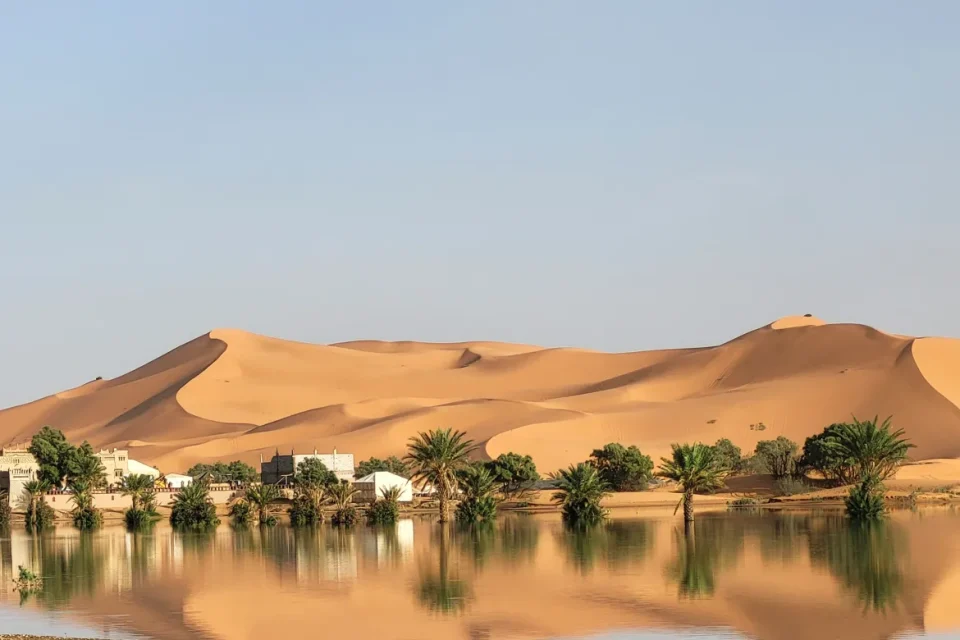RABAT, Morocco — An exceptional rainfall event has brought much-needed water to the arid expanses of the Sahara Desert, forming stunning blue lagoons amidst the palm trees and sand dunes. This rare deluge has nourished some of the driest areas in southeastern Morocco, providing more water in a matter of days than many regions have seen in decades.
Typically one of the most arid locations globally, this part of the Sahara rarely experiences rain, especially in late summer. However, the Moroccan government reported that two days of rainfall in September exceeded the average annual precipitation in several areas that receive less than 250 millimeters (10 inches) of rain each year. Tata was particularly hard-hit, with Tagounite, a village located approximately 450 kilometers (280 miles) south of Rabat, receiving over 100 millimeters (3.9 inches) in just 24 hours.
The storms created striking visuals, with water rushing through the shifting sands, enhancing the desert landscape already dotted with unique flora and historical structures. NASA satellites captured the incredible sight of water filling Lake Iriqui, a famous lake bed between Zagora and Tata that had remained dry for 50 years.
In the tourist-frequented desert communities, 4×4 vehicles splashed through the new puddles as locals marveled at the transformation. “It’s been 30 to 50 years since we’ve had this much rain in such a short time,” noted Houssine Youabeb from Morocco’s General Directorate of Meteorology.
Meteorologists are labeling these rains as outcomes of an extratropical storm, which may alter the region’s weather patterns for the foreseeable future. As the air retains more moisture, it could lead to increased evaporation and attract further storms, potentially changing the climate narrative in the region.
After six consecutive years of drought, many areas in Morocco have struggled, impacting farmers and leading to water rationing in cities and villages. The recent rains could significantly aid in replenishing the large groundwater aquifers that supply water to desert communities. Additionally, the region’s dams have reported record rates of refilling throughout September.
However, the heavy rains have also brought tragedy, resulting in over 20 fatalities across Morocco and Algeria and damaging crops. Consequently, the government is allocating emergency relief funds, addressing the challenges posed not only by the storms but also by last year’s devastating earthquake.
Credit: ABC News




